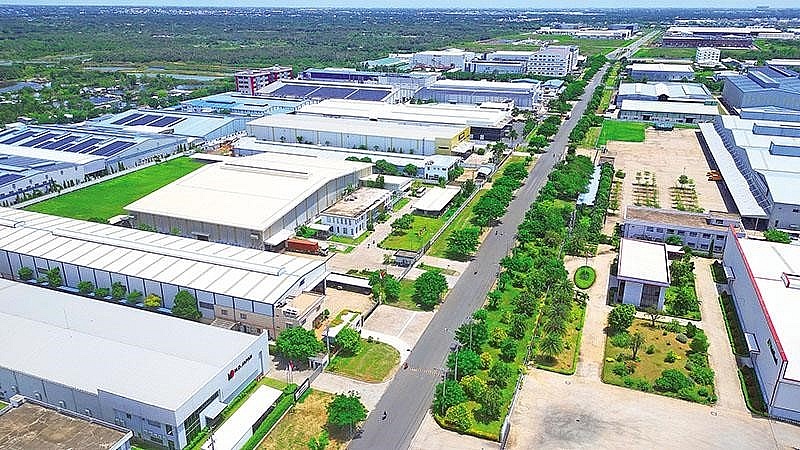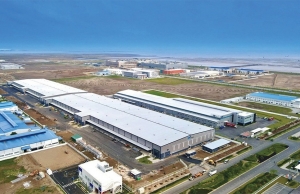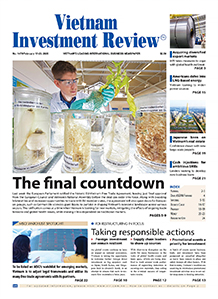Merging of provincial-level administrative units a driver for industrial real estate
 |
The merger of administrative units does not merely adjust boundaries but also carries the goal of streamlining the management apparatus, reducing fragmentation in planning, and enhancing competitiveness among localities.
According to Thomas Rooney, associate director of industrial services at Savills Hanoi, if carried out systematically, this process will help initiate the development of integrated urban-industrial ecosystems to attract more international investors, who are becoming more selective about investment destinations.
Expanding administrative boundaries will enable provinces to plan more large-scale IPs, offering more business options. With the increased available land, domestic and international enterprises will have greater access to suitable sites for establishing factories, thereby mitigating industrial land shortages in high-demand localities.
After the mergers, the larger provinces will have the foundation to delineate zones more clearly, thereby facilitating the development of specialised IPs or clusters, such as supporting IPs or specific-sector parks that supply components and parts for major manufacturing industries such as automotive and semiconductors.
Rooney noted, “Provinces which have already been standout destinations for investment will benefit from mergers and coordination by complementing each other in infrastructure, workforce, and development strategies. With a larger scale, these provinces can achieve higher standards in infrastructure and management, strengthening their position in the global value chain.”
Adjusting administrative boundaries will inevitably impact various aspects, from land use and planning investment licensing to legalities surrounding the environment and construction. According to the expert, short-term business discomfort may arise due to changing the point of contact and misalignment in the merged localities. However, this presents a major opportunity to rebuild a more transparent and efficient regulatory framework.
Better coordination and unified procedures within the new administrative zones will help save time, reduce compliance costs, and improve investor confidence.
Rooney added, “For industrial real estate, where stability and clarity in planning are critical, the unification of procedures and policies will pave the way for large-scale IPs integrating logistics infrastructure, satellite towns, and inter-regional transport links.”
One key impacted area is the workforce, a foundational layer of industrial real estate's competitiveness. Changes in administrative boundaries can affect workers' housing plans, administrative registration, and transportation connections. These changes could become a barrier if not correctly executed, simultaneously presenting an opportunity to rebuild the labour supply network on a regional and interprovincial scale.
The development of inter-regional infrastructure also drives the shift away from traditional industrial markets, where supply is limited and investment costs are rising. Emerging localities with abundant, affordable land and improved infrastructure will be able to become new industrial hubs.
This critical transition period is expected to last two to three years. The Savills associate director believed businesses need to proactively stay informed, establish relationships with the new local authorities, and remain flexible with their land use plans.
On the government side, the top priority is transparent communication. Proactively engaging in dialogue with businesses and providing support mechanisms, especially for small- and medium-sized enterprises, will help minimise major disruptions and maintain investment momentum.
Administrative restructuring should not become a barrier but rather a transformative springboard towards a more consistent, fair, and efficient investment environment.
The provincial merger proposal is a pivotal administrative reform that will directly impact Vietnam's development landscape. If carried out with a long-term vision and coordinated determination, it can become a new catalyst, enabling Vietnam's industrial real estate sector to break through and strengthen its position in the global value chain.
 | Industrial hubs strengthened following provincial mergers Several large industrial hubs will hope to be strengthened following an administrative merger, paving the way for a surge in foreign direct investment. |
 | Industrial zone developers adapt amid tariff turmoil Industrial zone developers are adjusting their strategies, diversifying tenant portfolios, and enhancing service quality to maintain investment appeal while awaiting positive signals from upcoming trade negotiations. |
 | Modern industrial system targeted The upcoming merger of provinces is to be synchronized with land use planning and simplified admin procedures to quickly form industrial metropolises and enhance high-tech manufacturing supply chains. |
What the stars mean:
★ Poor ★ ★ Promising ★★★ Good ★★★★ Very good ★★★★★ Exceptional
Related Contents
Latest News
More News
- CEO shares insights on Phu My 3 IP’s journey to green industrial growth (November 17, 2025 | 11:53)
- Business leaders give their views on ESG compliance in industrial parks (November 15, 2025 | 09:00)
- Industrial parks pivot to sustainable models amid rising ESG demands (November 14, 2025 | 11:00)
- Amata plans industrial park in Ho Chi Minh City (November 04, 2025 | 15:49)
- Businesses honoured for building a green future at VIPF 2025 (October 30, 2025 | 13:00)
- Vietnam’s growth formula evolves as high-tech and green industries take lead (October 30, 2025 | 08:34)
- Building Vietnam’s green industrial future: materials, mindset, and resource efficiency (October 29, 2025 | 20:00)
- Vietnam navigates complex landscape to accelerate strategic FDI (October 29, 2025 | 19:00)
- SLP charts strategic path through Vietnam’s industrial real estate market (October 29, 2025 | 18:06)
- VIPF 2025 highlights Vietnam’s evolving real estate landscape (October 29, 2025 | 18:03)

 Tag:
Tag:



























 Mobile Version
Mobile Version